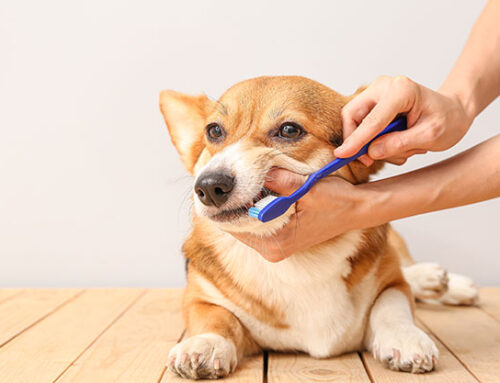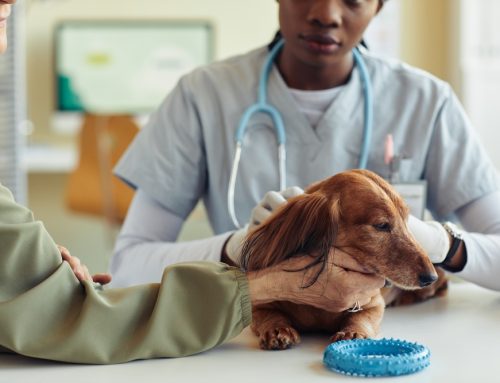Dental disease is one of the most common—and most overlooked—conditions affecting dogs and cats. While symptoms may seem minor at first, untreated oral health issues can lead to chronic pain, tooth loss, and systemic illness.
At The Gentle Vet, we help you catch these problems early, treat them effectively, and prevent them from returning.
What Is Pet Dental Disease?
Pet dental disease—more commonly known as periodontal disease—is an infection of the tissues surrounding the teeth. It begins with plaque, a sticky film of bacteria that builds up on the tooth surface. If left untreated, it hardens into tartar, leading to gum inflammation (gingivitis) and, eventually, advanced periodontal disease (periodontitis).
This condition causes irreversible damage to the gums, ligaments, and jawbone—and can significantly impact your pet’s quality of life. That’s why we follow the Veterinary Oral Health Council (VOHC) standards when recommending products to prevent plaque and tartar buildup.
What Causes Dental Disease in Pets?
Several factors contribute to dental issues in cats and dogs:
- Oral Bacteria: Naturally occurring but harmful when allowed to accumulate.
- Diet: Soft or sticky foods promote faster plaque formation.
- Breed & Anatomy: Small breeds and brachycephalic pets (like French Bulldogs or Persians) are more susceptible due to crowded or misaligned teeth.
- Age: The older your pet, the more time plaque and tartar have had to build up.
- Malocclusion: Misalignment of teeth can increase risk. Learn more from ABCs of Veterinary Dentistry: Malposition and Malocclusion.
Why Oral Health Matters
Dental disease can cause more than just discomfort. If left untreated, bacteria can travel from the mouth through the bloodstream and damage internal organs like the heart, liver, and kidneys. It can also affect your pet’s ability to chew, lead to chronic pain, and reduce their overall vitality.AAHA explains how oral health connects to total body health.
How to Recognize Dental Problems in Your Pet
Early signs of dental disease are easy to miss but critical to catch:
- Persistent bad breath
- Yellow or brown tartar on teeth
- Red or bleeding gums
- Excessive drooling
- Reluctance to eat or chew
- Pawing at the mouth or facial sensitivity
- Behavior changes like irritability or hiding
For a comprehensive guide, check out Pet Dental Care – AVMA.
What Happens When Dental Disease Goes Untreated
Without intervention, dental disease will continue to progress, leading to:
- Tooth root infections that can cause abscesses and severe pain
- Bone loss in the jaw, potentially resulting in fractures
- Tooth loss, which impacts nutrition and quality of life
- Systemic illness as oral bacteria enter the bloodstream
- Increased cancer risk—chronic inflammation is linked to oral tumors. Learn more here.
How We Diagnose Dental Disease
At your pet’s dental exam, we may recommend:
- Physical oral exam to evaluate visible signs
- Dental X-rays to assess root health and bone loss below the gum line. Learn more: Why X-rays matter
- Bloodwork to check for underlying conditions prior to anesthesia
- Biopsy or tissue evaluation if we detect unusual growths or lesions
Treatment Options
Treatment varies depending on severity and diagnosis:
- Professional cleaning under anesthesia, including scaling and polishing. Read more from AAHA on why anesthesia is essential.
- Tooth extractions if teeth are severely damaged or loose
- Root canal therapy, when preservation is possible
- Antibiotics or anti-inflammatory medications
- VOHC-approved home care, like brushing and dental chews
How Dental Pain Affects Daily Life
Dental disease doesn’t just stay in the mouth—it changes how your pet lives:
- Difficulty eating hard food or toys
- Decreased activity due to chronic discomfort
- Behavioral shifts like withdrawal or aggression
- Weight loss or poor coat condition due to reduced grooming and appetite
These subtle shifts may be the only clues that your pet is in pain.
Prevention Tips: What You Can Do at Home
Prevention is always better than treatment. Here’s how to protect your pet’s oral health:
- Brush your pet’s teeth daily with pet-safe toothpaste
- Use dental diets or treats designed to minimize tartar
- Provide appropriate chew toys that promote natural cleaning
- Schedule annual dental checkups to catch problems early
FAQs About Dental Care
Q: Is anesthesia really necessary for dental cleanings?
A: Yes. Anesthesia ensures your pet remains still and pain-free, allowing us to clean below the gumline where most disease hides.
Q: Are dental chews alone enough?
A: No. Chews help reduce tartar but don’t replace brushing and professional cleanings.
Q: How often should I brush my pet’s teeth?
A: Daily brushing is ideal, but even a few times a week makes a difference.
We’re Here to Support You
Dental care isn’t just about clean teeth—it’s about comfort, health, and longevity. At The Gentle Vet, we believe in making dental care approachable and effective. Our team is here to help you navigate every step, from prevention to advanced treatment. Schedule your pet’s dental exam today, or meet our compassionate team to learn more.









Leave A Comment